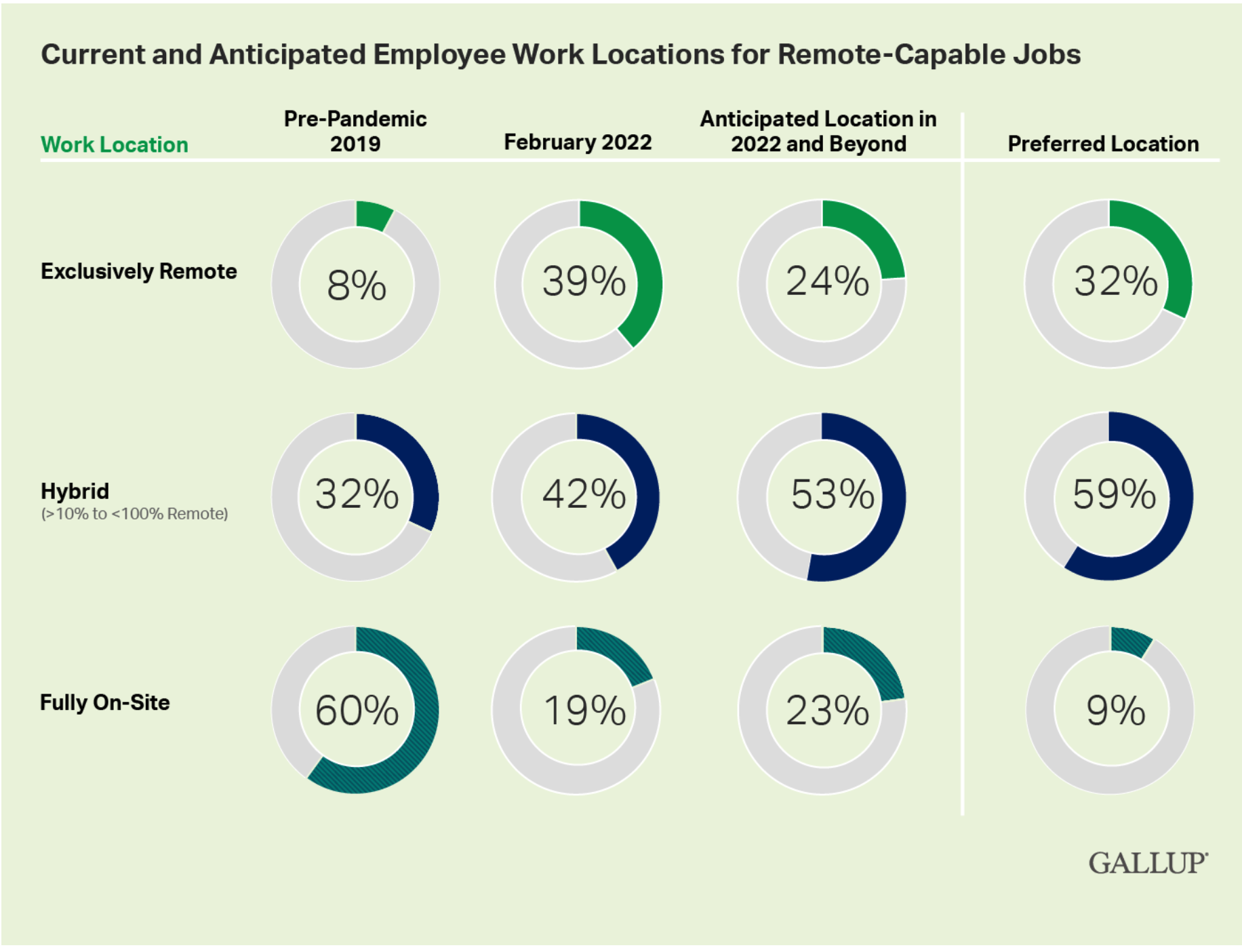Sticky solutions to your everyday business challenges
Question: I manage a team of 12 for an IT department of a biotech in San Diego, California. In 2020, we moved to a mostly remote work model. That was a welcome change for team members who were looking for flexibility. We shifted to a hybrid work model in early March of 2022, and I’m feeling that we need to revisit our team charter to reinforce a healthy culture even when our team members are in and out of the office. What guidelines should we consider for working together as a hybrid team?
 Answer: The hybrid work model is here to stay. According to a March 2022 study published by Gallup, remote-capable employees confirmed that a hybrid work schedule will be the predominant office arrangement going forward for their workplaces. About 53% expect a hybrid arrangement, and 24% expect to work exclusively remotely. It’s essential that your team members are equipped to perform at their best and that they feel a sense of connection both in the office and at home. In addition, workers are more interested in benefits around well-being than ever before. To keep your team members invested, consider flexible work models, benefits around mental and physical health, and new methods to maintain a vibrant culture. Here are three guidelines to explore.
Answer: The hybrid work model is here to stay. According to a March 2022 study published by Gallup, remote-capable employees confirmed that a hybrid work schedule will be the predominant office arrangement going forward for their workplaces. About 53% expect a hybrid arrangement, and 24% expect to work exclusively remotely. It’s essential that your team members are equipped to perform at their best and that they feel a sense of connection both in the office and at home. In addition, workers are more interested in benefits around well-being than ever before. To keep your team members invested, consider flexible work models, benefits around mental and physical health, and new methods to maintain a vibrant culture. Here are three guidelines to explore.
1. Start with a foundation of work/life balance. According to Harvard Business Review, wellness is one of the newest metrics that companies will use to understand their employees moving forward. Enterprise leaders need to actively work to ensure mental health preservation tactics are part of their employees’ routine. If leaders don’t proactively take this step, employee burnout will likely increase.
Consider offering regular time management group training sessions to ensure the team is focusing on high-impact work, and make space to engage in conversations about how to create the greatest impact while avoiding burnout. Review mental health resources, whether through an app like Noom Mood, meditation sessions, or a knowledge center on your intranet, to give your team guidance on how to manage their mental and emotional well-being. These work/life resources can help your team minimize stress levels, recognize the warning signs of burnout, and increase awareness of how to manage mental health while at work.
2. Build in belonging. Hybrid work can lead to FOMO when things happen at the office that remote workers miss. Proximity bias can also lead to favoritism for those who get more face time with you. This is especially true for newer team members who may have experienced a fully remote onboarding process during the pandemic.
Prioritize opportunities to connect in person to celebrate getting out of the Zoom boxes with team members who can take advantage of the opportunity to do so. Make active plans to engage employees both in-person and remotely – with a greater emphasis on the remote end of this connection. Make space to allow your team members to share at-home stressors that may impact their performance if they feel comfortable.
3. Extend trust. People have a new understanding of how their work impacts their personal values and way of life. Some will appreciate the extra family time that remote work or a flexible schedule allows, others might miss the social interactions in the office, and still others are simply relieved to skip the commute.
With a hybrid work model, be open to the idea of an asynchronous work schedule that employees can tailor to their daily lives. While there will always be some mandatory meetings, many remote-enabled employees can accomplish most of their work on their own time, perhaps touching base with you once a week or so for large projects. Potential new hires are seeking out organizations that treat them as trustworthy professionals and that offer the flexibility to create work schedules that fit their lifestyle needs. Businesses that are not transparent and consistent on this will miss opportunities to attract top talent.
Do you have a sticky solution question? Send your question to info@executiveexcellence.com.


